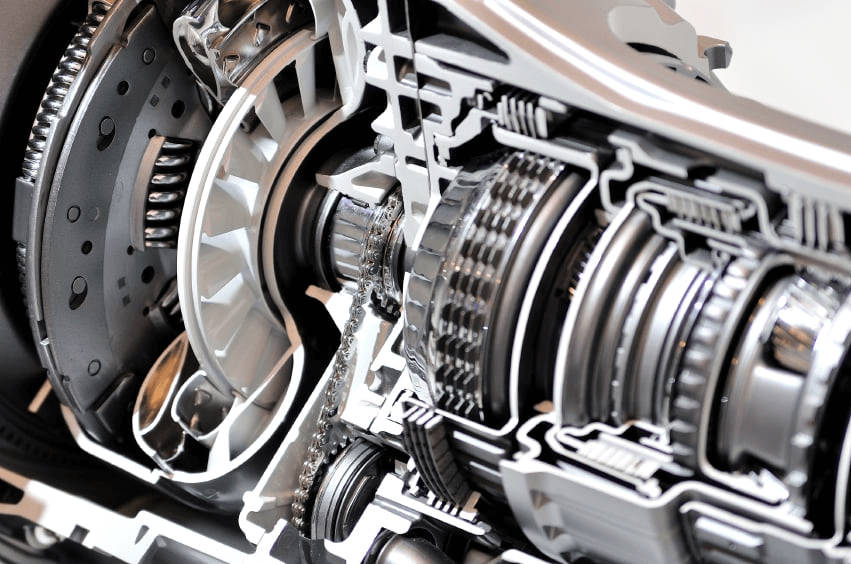
Can you replace a CVT transmission with a regular transmission?
In the recent times, vehicles come fitted with a Continuously Variable Transmission to the chagrin of many drivers who would love nothing more than to switch it out for an automatic transmission. In the below excerpt we will, therefore, find out if you can replace a CVT with a regular transmission.

Yes, you can replace your CVT transmission with a regular transmission, but you must know that transmissions do not work independently in a vehicle, as they come paired with transmission specific mechanical components, like powertrains, the onboard computer systems, and other associated hardware, which will also be part of the change.
The reason for the above is that the viability of such a process is highly dependent in the make and model of the vehicle. You will also have to find a highly skilled mechanic for the customization job and factor in the cost of his/her enthusiasm and time.
If you, therefore, decide to go with the above option, then it might interest you to know that getting a new vehicle equipped with your preferred transmission will cost you less than what you will spend in replacing the transmission.
What is a CVT Transmission
For us to fully comprehend the functions of the CVT and its replaceability, we have to first understand what it is, how it works and its location in the car? CVT transmissions are a type of automatic transmissions that can change through a continuous range of effective gear, and are located at the engine area. Their main job is to facilitate seamless revolutions per minute in the varying range of vehicle speeds.
How much does it cost to replace a CVT transmission?
Replacing a transmission will cost you an arm and a leg as they are utterly expensive, and CVTs are no exception. The average cost of replacing a CVT transmission is $5,000-$10,000. So what then are transmissions? Transmissions in a vehicle are a system of gears necessary for the transmission of power to the wheels, power that has been derived from the engine.
If you drive a car that has been equipped with a CVT, you will not have to manually shift the gears, because the cars computer system has been designed to mechanize the shifting. And the good thing about driving a car equipped with a CVT transmission is that it operates more like an automatic car. What’s more is that the power and efficiency of the vehicle are greatly enhanced.
Is it possible to convert a manual transmission to a CVT transmission?
Yes it is possible but it depends on a number of factors, for one, vehicles manufactured on or before the late 90s are not computerized, and finding some of the parts might be difficult since manufacturers design vehicle-specific components.
So, while it is possible to convert a manual to a CVT transmission, it is not an easy task nonetheless. Because, you will have to install an electronic control unit (ECU), swap out your manual gearbox for an automatic one, and then proceed to modify other parts such as the torque converter, wire harness, drivetrain, transmission mount, and other components to ensure compatibility with the new gearbox.
It is much easier to convert an automatic transmission (AT) to a manual one since it involves less moving parts. And here you will only have to swap the gearbox, install a clutch pedal and a few relevant wires. The only problem in this process is that modern cars tend to have a smaller transmission and engine space, it could thus be difficult to fit all the trappings that come with a manual transmission.
Are CVT transmissions better than automatic transmissions?
Unlike manual and automatic transmissions, CVTs are better because they use a two pulley system linked by a single steel band to provide seamless shifting through different gear ratios. This system offers constant engine speeds and better fuel efficiency. It also comes with a safe mode that shuts down or slows down your transmission when it heats up or acts faulty. But does this make the CVT better than the automatic?
Below are some of the reasons why CVT transmissions are better than ATs:
- Gas mileage
Manual cars since time immemorial have been known to be efficient in fuel than the automatic cars, but with the birth of the continuously variable transmission the narrative has changed. You will thus be able to save more gas with a CVT, due to its Kinetic energy recovery system that recovers and stores energy for future use.
Automatic transmissions have a fixed number of gear ratios, which means the engine will need to work harder when accelerating making it less fuel-efficient. The CVT’s ability to vary its gear ratios allows the engine to operate at constant speeds while still delivering maximum power to the wheels.
- Gear Ratios
Automatic transmissions have a fixed number of forwarding gears, to drive a 6-speed automatic transmission you will have to begin at the lowest gear (one) and shift from one gear to the next to attain higher speeds. CVTs, on the other hand, do not shift through gears in increments due to its ability to continuously accelerate through small and large increments.
It can, therefore, go faster than an AT since it’s not limited to a number of fixed gear ratios. The only problem is the shift to higher gears sometimes goes unnoticed by some drivers since it doesn’t surge forward as it would with an automatic transmission, and this can pose a danger on the road.
- Traffic and steep terrain friendly
Not a lot of work goes into starting, accelerating and decelerating when it comes to CVT and automatic transmissions. This is even more so for CVT transmissions which can constantly accelerate and come to an abrupt halt when needed. The CVT also does better when climbing hilly terrain due to its ability to find the right gear ratio and maintain it for longer. Its kinetic energy recovery system also stores up energy for such instances.
However, both CVTs and automatic transmissions are also manually less restrictive, and you do not have to constantly worry about simultaneously shifting gears and working the clutch like you would with a manual transmission.
- Faster speeds
If you are conversant with the workings of the various parts of a car then you must know that automatic cars have a fixed number of gears, most of which are between 5 and 7. But when it comes to CVT, you get an infinite number of gear ratios. The benefit of the above is that a driver will be able to maintain a steady cruising speed with fewer fuel emissions.
Now when you compare the speed performance of a CVT with that of an automatic transmission, the automatic engine will have to work extra hard to achieve a higher speed performance.
But, CVTs are not perfect and here are some of the drawbacks of owning a vehicle with a CVT transmission.
- Expensive to maintain
A CVTs pulley system uses a steel chain that is responsible for transferring energy from the engine to the rest of the car. The chain is an inch thick and is prone to breakage every other 50,000 miles if not well maintained. The problem is once the chain breaks it shatters and you will have to replace the whole transmission since repairs will be impossible and this is usually a costly affair.
- Limited number of skilled technicians
The CVT technology is still a new technology, and finding an auto repair shop that can rebuild or repair your CVT will be difficult. They are sophisticated engines making them expensive to fix, and that is why repairs are often carried out by the dealership. These costs and obstacles can be offset by giving your CVT enough TLC.
- Noisy
CVT engines produce a revving sound that may cause alarm to drivers used to driving automatic transmissions. This revving sound should not be confused with a whining, which usually means there is a problem with your engine that should not be ignored.
Frequently Asked Questions
- How do I know if my car is CVT enabled?
As you drive your car try to engage all your senses and listen to how your car is working if it has been equipped with a CVT then during acceleration the engine RPM will drop and that is of course without any feeling of a gear change. What’s more, is that if you have driven an automatic car before it is even easier to notice because you always feel the slight jerk of the gear change.
And if you are still new to driving then technology has your back and you just need to check on the internet if your car model is automatic or CVT equipped.
- Between CVT and Automatic which one is better?
From the above information, we have established that CVT has more pros than cons, and the most important one is that drivers get to enjoy quicker acceleration, and they are also environmentally friendly because of the fewer emissions.
- Is a Dual Clutch AT better than a CVT
The simple answer is yes! The reason being that DCT is much quicker in shifts among the AT transmissions. DCT can also contend with the high amounts of torque and power when compared to all other transmissions available.
Conclusion
It is not uncommon for consumers; in this case, drivers- to have different preferences when it comes to a vehicle’s transmission. A CVT, however, is just a sophisticated version of the AT and choosing between either solely depends on what the driver considers as an ideal driving experience.
Important to note is that if you like the gear changing facility then a car fitted with CVT should not be on your list but then again, we all want to save on fuel while not compromising on a smooth driving experience, so CVT still remains the better option. Given that we all have different likes and dislikes, it would be best if you made a decision from a test drive.
